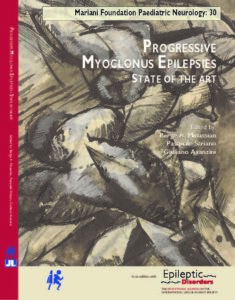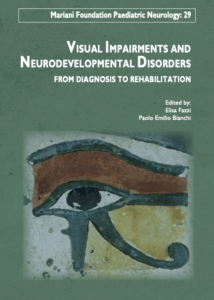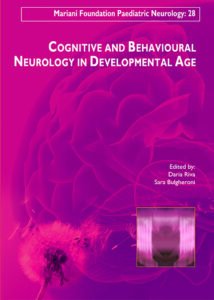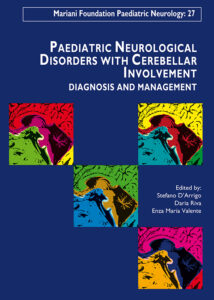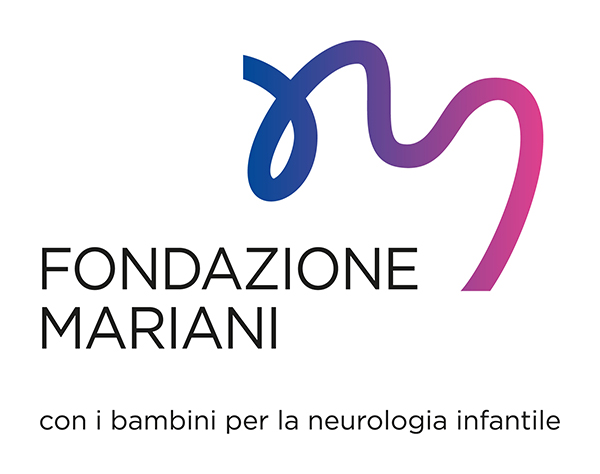Pubblicazioni / John Libbey Eurotext
Progressive myoclonus epilepsies – State of the art
Pubblicazione conseguente al relativo Simposio internazionale (Venezia, aprile-maggio 2010)
Editors: B.A. Minassian, P. Striano, G. Avanzini
London-Paris, John Libbey Eurotext Ltd, 2016, pp. 160 ca.
Disponibile in formato elettronico su Epileptic Disorders, Vol. 18, Suppl. 2, Sept. 2016, John Libbey Eurotext
Progressive myoclonus epilepsy strikes healthy children and has a slow yet devastating impact upon their lives. Almost all forms are caused by single gene defects, the majority of which were identified during the genomic era. Accurate clinical diagnosis is now straightforward and research into pathogenesis builds upon our understanding of causation. Future research is likely to lead to new therapeutic approaches while providing us with a better understanding of how the brain, the very essence of our being, operates, gene by gene. As we stand on the cusp of the post-genomic era, the emergence of unprecedented new tools, such as CRISPR and adeno-associated viruses, offers hope that these monogenetic diseases may one day be eliminated altogether. This book outlines the genetic, pathogenetic, pathological, and clinical aspects of progressive myoclonus epilepsies within the context of the post-genomic era.
Contents
Foreword by Antonio V. Delgado-Escueta
Preface by the Editors
1) The history of progressive myoclonus epilepsies – Pierre Genton, Pasquale Striano and Berge A. Minassian
2) Neurophysiology of myoclonus and progressive myoclonus epilepsies – Giuliano Avanzini et al.
3) Unverricht-Lundborg disease – Arielle Crespel et al.
4) Lafora disease – Julie Turnbull et al.
5) SCARB2/LIMP2 deficiency in action myoclonus-renal failure syndrome – Leanne M. Dibbens et al.
6) Neuronal ceroid lipofuscinoses – Dragos A. Nita, Sara E. Mole and Berge A. Minassian
7) Sialidoses – Silvana Franceschetti and Laura Canafoglia
8) Myoclonic epilepsy in mitochondrial disorders – Costanza Lamperti and Massimo Zeviani
9) Progressive myoclonic epilepsy associated with neuroserpin inclusion bodies (neuroserpinosis) – Benoit D. Roussel et al.
10) GOSR2: a progressive myoclonus epilepsy gene – Leanne M. Dibbens and Guido Rubboli
11) KCTD7-related progressive myoclonic epilepsy – Patrick Van Bogaert
12) Autosomal recessive progressive myoclonus epilepsy due to impaired ceramide synthesis – Edoardo Ferlazzo et al.
13) Spinal muscular atrophy associated with progressive myoclonic epilepsy – Haluk Topaloglu and Judith Melki
14) Myoclonus epilepsy and ataxia due to potassium channel mutation
15) Assistive technology for rehabilitation and school inclusion of low-vision children and adolescents – Massimo Guerreschi, Giuseppina Giammari, Elisa Pozzoni and Renato Borgatti (MEAK) is caused by heterozygous KCNC1 mutations – Fabio A. Nascimento and Danielle M. Andrade
16) Myoclonus and seizures in PMEs: pharmacology and therapeutic trials – Roberto Michelucci et al.
17) Post-modern therapeutic approaches for progressive myoclonus epilepsy – Berge A. Minassian
John Libbey Eurotext
Mariani Foundation Paediatric Neurology Series
Updates on specific subjects written by European experts and aimed at neurologists, neuro-paediatricians and paediatricians.
This well-known Italian Foundation, active worldwide with training and research projects, provides a constant in-depth observatory on the progress of paediatric neurology.
Altre pubblicazioni
John Libbey Eurotext
Visual impairments and neurodevelopmental disorders
Mariani Foundation Paediatric Neurology Series – XXIX
John Libbey Eurotext
Cognitive and behavioural neurology in developmental age
Mariani Foundation Paediatric Neurology Series – XXVIII
John Libbey Eurotext
Paediatric neurological disorders with cerebellar involvement
Mariani Foundation Paediatric Neurology Series – XXVII
